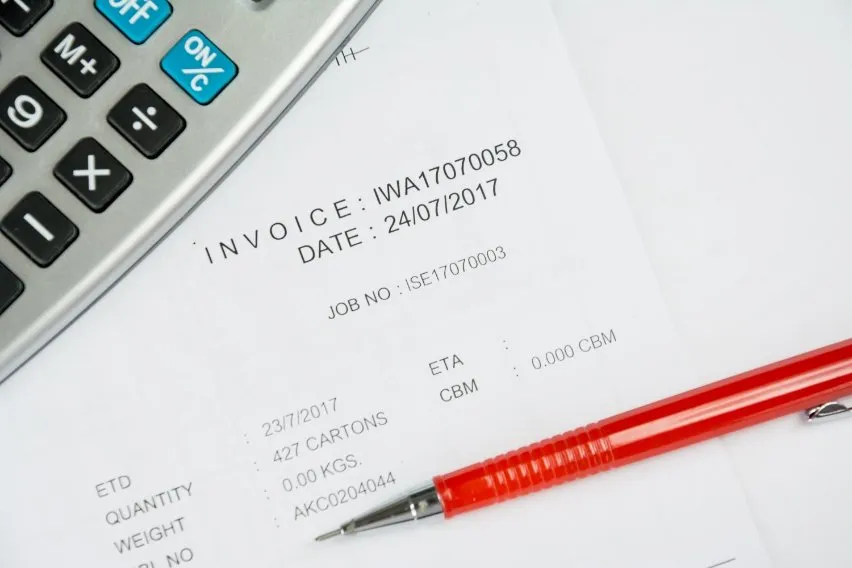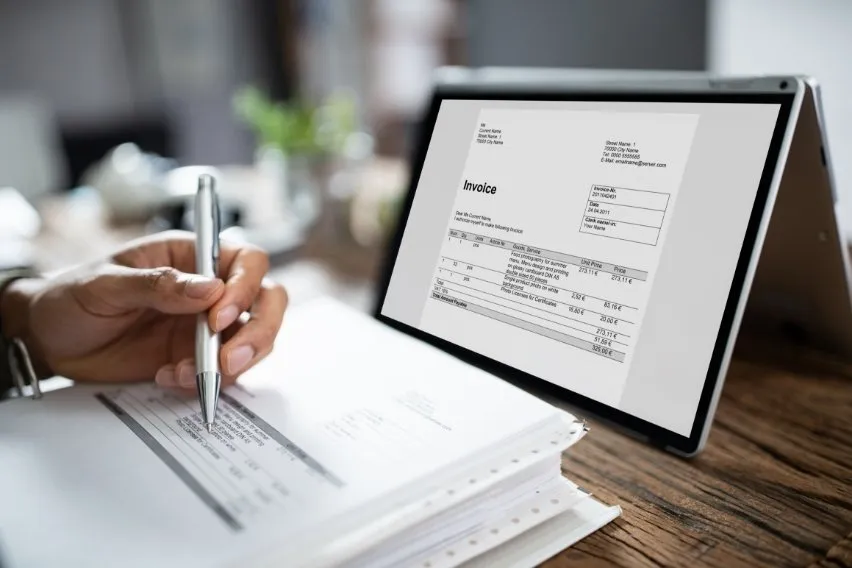3-Way Matching: Definition & How It Works

Most businesses face a monthly onslaught of supplier invoices. Unfortunately, this high volume of purchases offers plenty of opportunities for billing fraud. To mitigate the invoice fraud risk, many business owners and finance departments use 3-way matching. This way, they can verify the validity of the received invoices.
But what is 3-way matching, and how does it work? Here’s everything you need to know.
Table of Contents
How Does Three-Way Matching Work?
What Are the Components of a 3-Way Match?
Benefits of 3-Way Matching for Businesses
Difference Between 3-Way, 2-Way, and 4-Way Matching
The Best Way to Make 3-Way Matching Efficient
What Is 3-Way Matching?
Three-way matching is an accounts payable (AP) invoice approval process. It is crucial to determine whether the received supplier invoice is valid and correct.
Performing three-way matching can help the business spot fraudulent invoices. This way, it can avoid making costly mistakes. By rooting out unauthorized transactions, businesses avoid losing parts of their annual revenue.
Small businesses experience billing fraud almost twice as often as larger companies. However, no company is safe from this fraudulent practice. Even Google and Facebook’s AP teams fell victim to it in 2015. The companies ended up paying millions of dollars for fake invoices.

How Does Three-Way Matching Work?
In a three-way matching process, the company cross-references three documents. These documents include the supplier’s invoice, the purchase order (PO), and delivery receipt. The goal is to ensure all pertinent details match. The essential information to pay attention to includes the following:
- The number of items or services ordered
- The agreed cost
This payment verification technique validates the information across the trio of related documents. Then, the company can pay the vendor invoice.
Suppose the accounts payable team detects an error or an issue. In that case, it will withhold the payment. The payment can only go through after an investigation of the discovered discrepancies.
What Are the Components of a 3-Way Match?
As the name of this accounts payable process suggests, there are three components of a three-way match. These components are actually three documents. Let’s examine each of these three essential documents in more detail.
Purchase Order
A purchase order is the official order receipt that a buyer sends to a vendor. This receipt authorizes the purchase. Purchase orders usually contain the following items:
- A unique invoice number
- The description of the goods and services
- The number of items sold
- The payment amount
- Payment information
- Vendor contact details
The buyer and the vendor should have already agreed to everything listed on a purchase order. To learn more about the workings and importance of a purchase order number, check out our post What is a P.O. Number.
Goods Receipt Note
The delivery receipt or a goods receipt note is a receiving report. It confirms the full or partial delivery of an order. The order receipt comes with the delivered goods. It indicates payment details and which goods the shipment includes.
The number of items delivered should match the quantity on the purchase order. The receiving department reports this quantity.
Supplier’s Invoice
The supplier’s invoice is a part of the supplier’s request for payment. It includes all the necessary invoice details to make the payment, such as:
- A unique invoice number
- Applicable discounts
- The payment schedule
- The total amount due
The three-way matching process will verify if the supplier is asking for the correct amount of money. It has to be the exact amount the purchasing department authorized on the purchase order. It will also check if the supplier requests full or partial payment. This is especially important if the business received only a part of the order.
Benefits of 3-Way Matching for Businesses
A business can benefit from three-way-match processing in several ways.
Three-Way Matching Helps Businesses Catch Fraudulent Invoices
Invoice fraud is a serious issue that affects businesses of all sizes. The three-way matching process acts as a form of checks and balances. Comparing the three critical documents in this process ensures an invoice is legitimate. This way, the accounting department will only pay for authorized order receipts.
Three-Way Matching Can Save Money and Time
When an accounts payable team identifies a fraudulent invoice, they stop the company from wasting money on a phony supplier. Plus, the 3-way matching process can help catch invoice discrepancies. Otherwise, these can result in overpaying or making duplicate payments. Simply put, this straightforward process benefits the business’s bottom line.
Moreover, companies can save a lot of time by replacing a manual matching process with an automated matching process. They will be able to process invoices faster. Plus, these companies can take advantage of discounts offered for timely payment. This again circles back to saving money.
Three-Way Matching Improves Business Relationships
A business can form a strong bond with partners who always send accurate vendor invoices. As a result, it will pay them faster, which often leads to better pricing and credit terms.
Also, suppliers and vendors might lose trust if the purchase orders and order receipts are often inaccurate. As a result, they can take their business elsewhere.
Three-Way Matching Prepares Finances for an Audit
The three documents this process requires are also critical in internal and external audits. The 3-way match process ensures consistency of purchase orders, invoices, and order receipts. As a result, businesses can prepare for audits in no time.
Difference Between 3-Way, 2-Way, and 4-Way Matching
By default, most businesses use a two-way matching process. Two-way matching only compares the invoice to its purchase order. A three-way match process adds another step in verifying the delivery of the purchased products. This step exists thanks to the packing slip.
Four-way matching goes even further by adding an inspection process after the delivery. With this system in place, goods and services are only accepted after establishing that all the documents match.
While more meticulous than three-way matching, this process is rather time-consuming and labor-intensive. As such, the companies should only use it when they need strict compliance and verification.
Three-way matching is the ideal choice for internal control of regular business operations. It’s more reliable than two-way matching and avoids delayed payments that can occur with four-way matching.
Example of Three-Way Matching Process
To illustrate how three-way matching works, let’s look at a hypothetical situation. An event-planning agency has ordered 1,000 copies of placeholder cards for a client.
The agency first finds a suitable printing company for the cards and places the order. Then, it issues a purchase order listing the necessary information, such as:
- The printer’s name and details
- The card description
- 1,000 pieces for delivery
- The total cost of, let’s say, $2,000
- The payment method
- The expected delivery date
After receiving the order and the digital files, the printer completes the job in the agreed time frame. Then, the printer issues an invoice for $2,000 requesting payment. At the same time, it delivers the placeholder cards to the receiving department with a delivery note and a packing slip.
Once all the components of a three-way match have arrived, the company’s AP team sets out to verify their authenticity. In general, the process goes like this:
- Determine if the agency’s purchasing department was authorized to order 1,000 cards from that vendor.
- Check if the price for printing the cards matches across all documents.
- Verify that the company’s name on the purchase order matches the invoicing company.
- Go over the delivery logs to ensure 1,000 placeholder cards were delivered in full.
If the information from the document coincides with the actual delivery, there is a three-way match. If that’s the case, the accounts payable staff can continue to a secure payment process, knowing it’s paying for a legitimate invoice.
The Best Way to Make 3-Way Matching Efficient
Every business that uses three-way matching should establish strict rules for their verification and payment processes. By sticking to a uniform policy, the business will get the most out of three-way matching.
The policy should consider the following aspects:
- Value threshold. The business can stipulate which invoices are subject to three-way matching. This requires establishing a value threshold. As a result, the business will only check invoices over a specific dollar amount. This way, they avoid significant financial losses on high-value purchases.
- Discrepancy threshold. The business can allow accounts payable personnel to pay invoices that match the purchase order to a specific percentage. This way, it can account for minor discrepancies that result from legitimate charges.
- Supplier rating. The business can rank suppliers based on their invoices’ accuracy. Suppliers who continuously send accurate invoices receive a high rating. This rating signals that their future invoices only need periodic control.
All these steps can make three-way matching more efficient. Yet, few steps can compare to the right automation solution for three-way matching. This way, employees won’t have to check each invoice. They only need to check those flagged for some discrepancies. This leads to a significant efficiency boost.
Why Automate 3-Way Matching?
Three-way matching has many advantages in accounts payable. But, manual matching comes with several challenges. These can deter a business from taking up this practice. Namely, manual matching:
- Is usually highly labor-intensive
- Can be complex due to many variables
- Comes with unnecessary processing costs
- Can’t handle a high volume of invoices, resulting in late payments
- Leaves room for human error, such as misreading figures or misplacing paperwork
For these reasons, businesses should strive to automate three-way matching. Automating this process can save them time and money. It can also enable their employees to focus on higher-value projects.
Automating three-way matching comes with other benefits, such as:
- Allowing businesses to scale for growth
- Streamlining accounts payable procedures
- Handling a high volume of invoices
- Avoiding human error
- Cutting out unnecessary steps
- Keeping all approved files and documents in a centralized location
Companies that want to fully automate their processes should consider using invoicing software. A program like FreshBooks can help businesses:
- Handle a high volume of invoices
- Send automatic late payment reminders
- Set up recurring invoices

Key Takeaways
Three-way matching is an AP process that businesses use to verify invoices. They check the invoices against corresponding purchase orders and order receipts. This process reduces the chances of paying for fraudulent invoices. It also improves business relationships, and saves time and money. It represents a better internal control solution than two-way and four-way matching. Still, businesses can take several steps to make this process more efficient. These steps include automation. An automated system saves time and effort and allows the business to grow.
FAQs on 3-Way Matching
What is 3-way matching in SAP?
Three-way matching is an SAP control functionality. It ensures that the quantity and price of items are the same across three documents. These documents are the purchase order, the delivery receipt, and the supplier’s invoice. SAP offers several configuration methods. A company can adapt these methods to suit its specific purchasing process.
Who performs the three-way match?
The accounts payable team performs a manual three-way match. Alternatively, a software program takes on automated matching processes. The program will only alert the team of discrepancies. After receiving a report, the team will look into the flagged invoices manually.
What documents are examined for three-way matching?
Conducting three-way matching requires three documents. These documents are the purchase order, the delivery receipt, and the supplier’s invoice.
RELATED ARTICLES

 Proforma Invoice vs Commercial Invoice: What’s The Difference?
Proforma Invoice vs Commercial Invoice: What’s The Difference? How to Write an Invoice: Step-by-Step Guide With Template
How to Write an Invoice: Step-by-Step Guide With Template Invoice Management: Definition & Benefits
Invoice Management: Definition & Benefits Sales Order vs Invoice: Meaning & Difference
Sales Order vs Invoice: Meaning & Difference Invoice Discounting: Definition and Benefits
Invoice Discounting: Definition and Benefits Fake Invoice: How To Protect Your Business
Fake Invoice: How To Protect Your Business